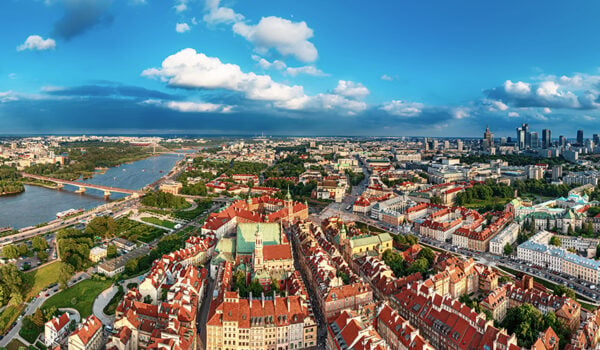Air quality is steadily improving across Europe with most air pollution monitoring stations achieving current EU annual limits for some of the most harmful air pollutants. However, additional measures to improve air quality will be required to fully meet current and future EU air quality standards.
The European Environment Agency (EEA) recently published their air quality data analysis for 2023 and 2024.
Air quality standards are tightening
These latest data collected from monitoring stations showed specifically that EU standards were broadly met for fine particulate matter (PM2.5) at 99% of stations. In addition, the standards for nitrogen dioxide (NO2) were also met at 98% of stations. These two are deemed significantly harmful air pollutants.
Despite this, the World Health Organization (WHO) guideline levels are not widely met in Europe. Thus, air pollution remains the region’s largest environmental health risk, causing diseases, lowering quality of life and leading to preventable deaths.
The EEA’s Air quality status report 2025 gives the latest official reported data for the past two years on levels of key air pollutants in Europe. It also compares these concentrations against the current EU air quality standards, the stricter standards set by the revised EU Air Quality Directive to be met by 2030, and the WHO health-based air quality guideline levels.
Norwegian air quality facts
The EEA has produced factsheets with air pollution and health data by country. The factsheet for Norway shows, among other things, that in 2022, 350 deaths could be linked to PM2.5 pollution, compared to 239,000 deaths in the 27 EU countries.
In the report Assessing the environmental burden of disease related to air pollution in Europe in 2022, the European Topic Centre on Human Health and the Environment, ETC HE) addresses the effects of air pollution on health.
Health effects |
|||
| Countries | Attributable deaths **, PM2,5 | Attributable deaths, NO2 | Attributable deaths, ground-level ozone (O3) |
| Norway | 350 | 80 | 380 |
| EU27 | 239 000 | 48 000 | 70 000 |
| EEA32 * | 241 000 | 63 000 | 78 000 |
| * EEA32 = The 27 EU Member States (after withdrawal of the United Kingdom on 31 January 2020) plus Iceland, Lichtenstein, Norway, Switzerland and Türkiye.
** An attributable death is defined as a death which is statistically attributable to the exposure towards a risk factor, e.g. PM2.5. The attribution is based on the evidence from studies for the causal link between a risk factor and the health outcome leading to death. |
|||
A risk to health
Air quality in Europe has improved significantly over the past few decades for most pollutants. Still, there are locations across the EU that have pollutant concentrations that exceed current EU standards and are above the stricter WHO guideline values.
The most significant of these pollutants is fine particulate matter (PM2.5). Since 2011, all countries have reduced exposure of their urban population to PM2.5 particles, from a health perspective the most harmful pollutant. But the vast majority (94%) of the EU urban population still remains exposed to PM2.5 concentrations above WHO guideline values. This highlights the need for additional measures to reduce the associated health risks.
When assessed against WHO guideline levels, the number of monitoring locations in 2023 where air quality is considered safe for health was relatively low. This is particularly true for PM2.5 and ozone. The risk of health impacts linked with these pollutants include respiratory and cardiovascular diseases.
Achieving the recently revised EU limits, required by 2030, will help to reduce these health impacts. It will also bring air quality levels closer to the WHO guideline values over the coming years, the EEA report says.
Progress to stricter 2030 EU rules
A distance-to-target analysis of current data to the 2030 limit value found that a significant proportion of air pollution monitoring stations in 2023 already comply with the 2030 standards for all pollutants. For nitrogen dioxide, more than 70% of stations had concentrations below the standards to be met in 2030.
For fine particulate matter, a lower number of stations fell below the 2030 annual limit value. But to meet these standards everywhere, and based on current progress, additional measures to improve air quality, are likely to be needed – especially in cities.




